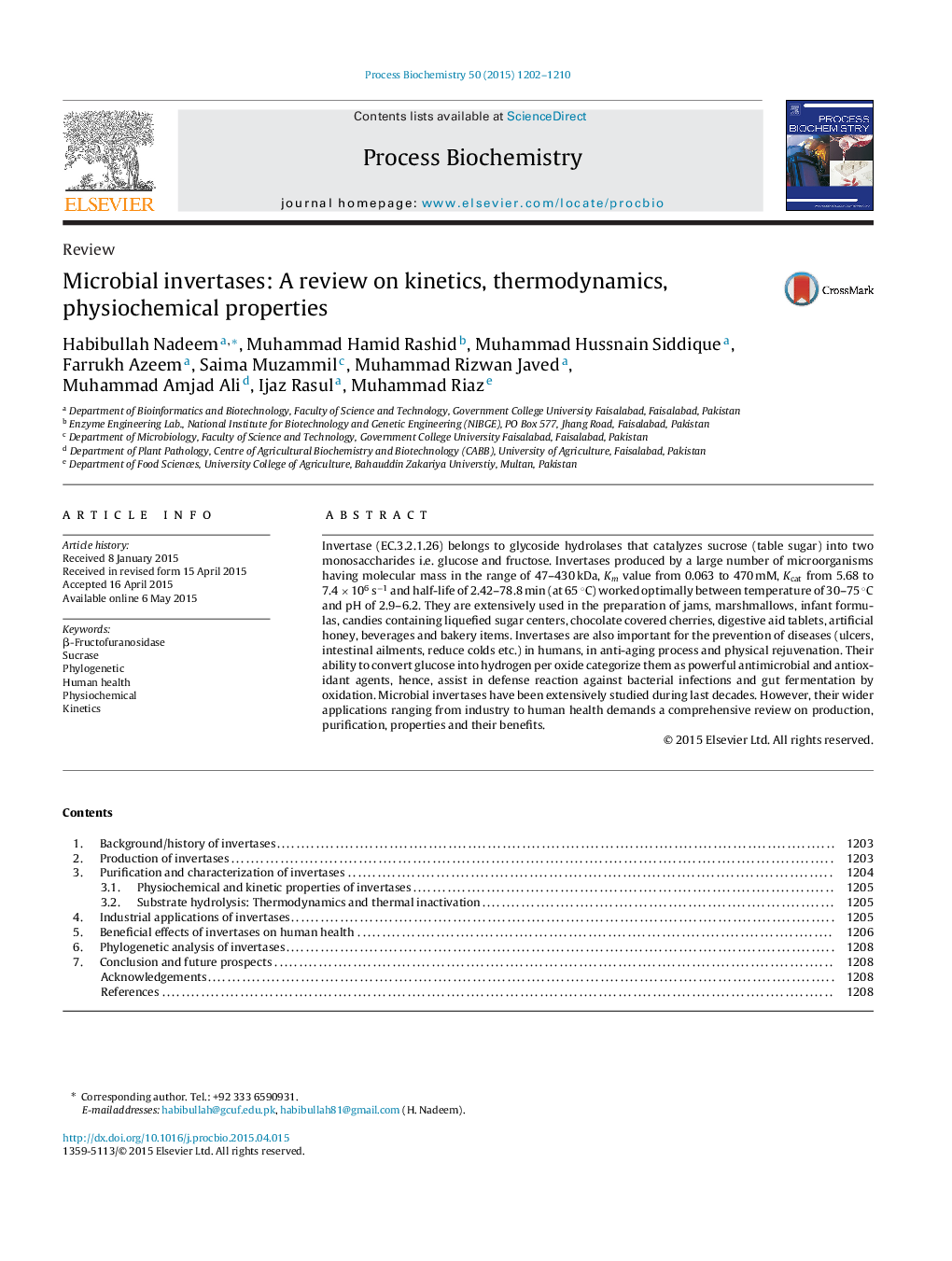| Article ID | Journal | Published Year | Pages | File Type |
|---|---|---|---|---|
| 34307 | Process Biochemistry | 2015 | 9 Pages |
•Background/history of invertases.•Production, purification, physiochemical, kinetic and thermodynamic characterization of microbial invertases.•Beneficial effects of invertases on human health.•Industrial applications and future prospects of invertases.•Phylogenetic analysis of invertases.
Invertase (EC.3.2.1.26) belongs to glycoside hydrolases that catalyzes sucrose (table sugar) into two monosaccharides i.e. glucose and fructose. Invertases produced by a large number of microorganisms having molecular mass in the range of 47–430 kDa, Km value from 0.063 to 470 mM, Kcat from 5.68 to 7.4 × 106 s−1 and half-life of 2.42–78.8 min (at 65 °C) worked optimally between temperature of 30–75 °C and pH of 2.9–6.2. They are extensively used in the preparation of jams, marshmallows, infant formulas, candies containing liquefied sugar centers, chocolate covered cherries, digestive aid tablets, artificial honey, beverages and bakery items. Invertases are also important for the prevention of diseases (ulcers, intestinal ailments, reduce colds etc.) in humans, in anti-aging process and physical rejuvenation. Their ability to convert glucose into hydrogen per oxide categorize them as powerful antimicrobial and antioxidant agents, hence, assist in defense reaction against bacterial infections and gut fermentation by oxidation. Microbial invertases have been extensively studied during last decades. However, their wider applications ranging from industry to human health demands a comprehensive review on production, purification, properties and their benefits.
